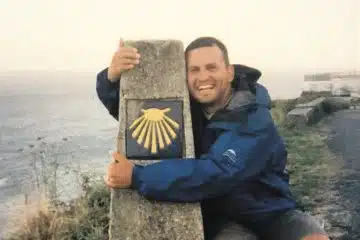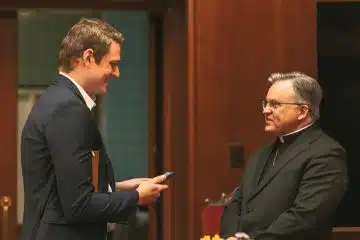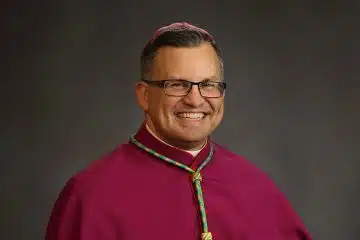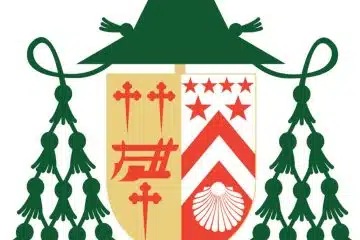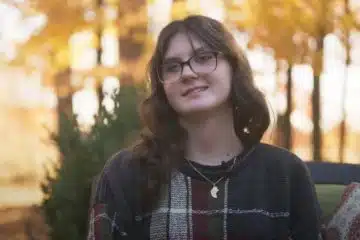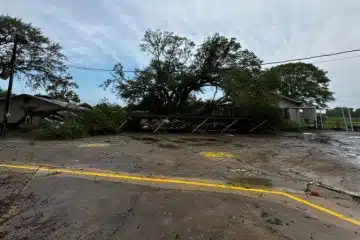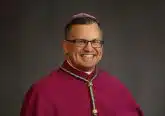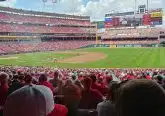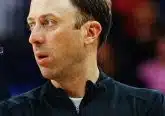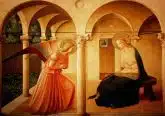Vatican Observatory astronomer gives presentation at Bellefontaine parish
March 17, 2011
By David Eck
SIDNEY DEANERY — As a child growing up in Detroit, Jesuit Brother Guy Consolmagno loved looking at the stars through his telescope, but he also enjoyed pretending to be a priest and saying Mass.
 |
| Pope Benedict XVI viewed a display during his visit to the headquarters of the Vatican Observatory in Castel Gandolfo, Italy, in 2009. Jesuit Brother Guy Consolmagno, at right, explained the display. (CNS photo) |
Today Brother Guy blends his passion for astronomy with his religious vocation. He is an astronomer at the Vatican Observatory in Rome and spends about half the year traveling the world explaining the parallels between science and religion.
Science is way of worshiping God, Brother Guy said during a March 6 visit to St. Patrick Parish in Bellefontaine. Among the ways God reveals himself to us is through the natural world, he said.
“Doing science is a way of prayer,” Brother Guy said. “When we study science, we’re spending time with God.”
About 100 St. Patrick parishioners and community members attended Brother Guy’s hour-long presentation. He encouraged them to spread a passion for science and astronomy to other parishioners.
Religion and science, while not identical, have common underpinnings, he noted.
Many of the world’s early scientists were also religious men, Brother Guy explained. Roger Bacon, for example, was active in experimental research. St. Albert the Great was a noted scientist, and Gregor Mendel, an Austrian Augustinian monk, is credited with forming the basis for modern genetics.
“The clergy were the scientists,” Brother Guy said. “Anyone who tells you there is an eternal war between science and religion doesn’t know what he is talking about.”
Religion, like the scientific world, also requires a structure and interpersonal relationships in order to be understood, Brother Guy explained. People need each other to discuss religious concepts, test theories about them and compare them with others, he said. In the same way, scientists need the National Aeronautics and Space Administration to fly to the moon and explore the galaxies.
“That’s one of the benefits of being part of a community,” Brother Guy said. “You need a community of people, because none of us can do this on our own.”
A self-described “techie,” Brother Guy earned a master’s degree in earth and planetary sciences from the Massachusetts Institute of Technology in 1975 and a doctorate in planetary science from Arizona State University in 1978. He worked at the Harvard Observatory and at MIT before joining the Peace Corps in 1983, serving two years in Kenya teaching physics and astronomy. He returned to the United States in 1985, and became an assistant professor of physics at Lafayette College in Pennsylvania until entering the Society of Jesuits in 1989. He professed first vows in 1991 and final vows in 2007. He has been assigned to the Vatican Observatory since 1993.
“I absolutely love my science,” he said. “I like my religion. I’m part of it.”
Scientists accept key religious principals in carrying out their work, including a belief in the universe, Brother Guy said. They also understand that the universe makes sense and was created logically, step-by-step. Finally, they realize that God injected himself into the universe with His creation.
Science can be used to protect religion from skepticism, Brother Guy said, but religion can help scientists see there is more to life than science, like beauty and love.
Saul Bauer, who has been a parishioner at St. Patrick for 14 years, attended the presentation because of an interest in science.
“I thought it was excellent,” Bauer said. “We’re such a scientific culture. I loved how he incorporated the understanding that we are people of faith more than we are people of science.”
Tim Steinhelfer, a lifelong St. Patrick parishioner, said the topic of religion and science is becoming more relevant in society.
“I liked how he talked about how one informs the other,” Steinhelfer said. “I think we’ll see the topic more and more as time goes on. It’s not often that we hear someone speak about it in the manner that he did.”
David Eck can be reached at [email protected].



